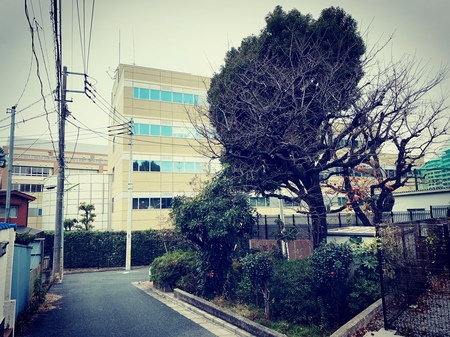特性を活かす
敷地の文脈/コンテクストがお宝だといつから思っていたのだろうか。
一番最初の建築設計は大学の設計演習の時、課題が「大学のキャンパス内に教会をつくる」だった。
その時、計画地周辺の人の流れを観察していたら、計画地の中に道をつくれば、校舎間の移動の時に必ず人が通ると思った。
だから、計画地の真ん中を貫くように道をつくり、その道の両側に礼拝堂や大小の所用室を配置して、道にも屋根をかけ、道という半屋外空間がつなぐ教会を設計した。
その道は、礼拝堂や所用室と言った教会にとって必要な空間をつなぐ役目を果たすが、同時にキャンパス内の校舎という主要な空間もつなぐ役目を担ったので、この教会があることによって、人の流れが新たにでき、様々な交流が誘発されるかもしれない所が非常に気に入っていた。
その頃は、文脈/コンテクストなんて言葉は知らなかったけれど、敷地にどういう特性があるのかを考えて設計に活かすことは、最初から当たり前のようにやっていた。

"Take advantage of characteristics"
When did the context / context of the site think that it was a treasure?
The first architectural design was when design exercises of the university, the assignment was "to create a church in the university campus".
At that time, if you were observing the flow of people around the planned area, if you make a way in the planned area, you think that people will surely pass when moving between school buildings.
Therefore, we made a way to penetrate the center of the planned place, chapels on both sides of the road, and large and small working room, we also designed a church that connects the semi-outdoor space called a road by placing a roof on the road.
That road serves the purpose of connecting the necessary space for the chapel called the chapel and the serving room, but at the same time it also played the role of connecting the main space called the school building on the campus, so this church allows people's flow I liked the place where new exchange and various exchanges might be induced.
At that time, I did not know the context / context words, but I thought about the characteristics of the premises and made use of it in the design as it is normally done from the beginning.

コメント